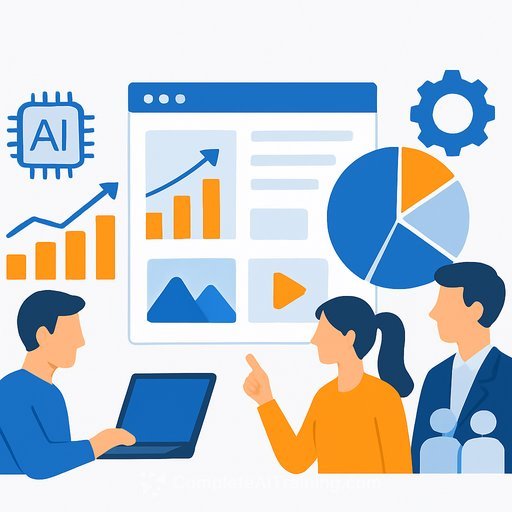LiveRamp's Agentic AI Orchestration: What Marketers Should Do Next
LiveRamp (NYSE:RAMP) introduced new AI features that let autonomous agents coordinate core marketing tasks across identity, segmentation, activation, and measurement. The release includes natural language audience building and search tied to its data collaboration network. Taken together, this positions LiveRamp as the first to let AI agents securely work across the stack in one workflow. For marketers, that means less manual setup, faster testing cycles, and tighter feedback loops.
What's New and Why It Matters
Agentic orchestration lets AI agents take on repeatable steps: define an audience, find media scale, activate, then measure lift-while honoring governance rules. AI-powered segmentation enables teams to generate precise audiences with a simple prompt, cutting the time from brief to launch. Search across the data network can surface attributes and lookalikes you might miss in a traditional UI. As third-party cookies fade and first-party data gains weight, these tools compress execution time and improve iteration speed.
30-Day Pilot Plan
- Pick two outcomes: e.g., lower CAC on a priority segment and improve reactivation of lapsed users. Set clear success metrics and guardrails.
- Connect data: Bring consented first-party data (CRM, web, app). Enforce purpose limitations, data residency, and access controls from day one.
- Create prompt templates: Define audience prompts like "High-LTV prospects similar to last quarter's top 10% buyers, exclude existing subscribers, US only." Standardize naming and exclusions.
- Test design: Stand up control vs. AI-built segments. Measure with incrementality tests or MTA. Track CPA, ROAS, and reach-quality metrics.
- Human-in-the-loop: Require approval on identity settings, sensitive attributes, and activation partners. Log every agent action for audit.
- Activate everywhere it counts: Sync to paid social, programmatic, CTV, email, and onsite personalization. Align budgets and frequency caps pre-launch.
- Weekly review: Compare against a manual baseline. Keep what beats the benchmark, refine what's close, cut what lags.
Measurement, Privacy, and Governance
Agentic workflows are only useful if measurement is trustworthy. Tie audience output to incrementality testing and ensure identity resolution settings match your risk profile (match tiers, recency, region). Build permissioning so sensitive attributes can't slip into activation. For broader context on privacy-safe advertising shifts, see Google's Privacy Sandbox overview here.
Budget Context: What the Market Expects
Analyses referenced around this launch point to LiveRamp reaching about $969.7 million in revenue and $154.0 million in earnings by 2028. That implies roughly 8.3% annual revenue growth and an earnings step-up of about $141 million from a current $12.7 million base. Investor views aren't uniform-community fair values range from $28 to $52 per share, with one model landing near $39.62 (about 45% upside from a recent price snapshot). Two swing factors: concentration in large enterprise accounts and competition from major platforms building similar features.
Practical Checklist for Marketing Leaders
- Data prerequisites: Consent strategy, first-party identity, and clean room readiness.
- Use cases: Prospecting lookalikes, churn prevention, win-back, and cross-sell.
- Controls: Sensitive attribute policies, regional data handling, and audit logs.
- Stack fit: CDP, ad platforms, analytics, and experimentation tools.
- Team skills: Prompt writing, test design, and AI guardrails. If you need a faster ramp for your team, see our marketer-focused AI certification here.
- Cost control: Start with capped budgets. Expand only where AI-built segments beat baselines.
Risks to Track
- Vendor dependency: Maintain data portability and export paths to avoid lock-in.
- Identity coverage: Check match quality by channel and region; don't assume parity.
- Policy drift: Re-validate compliance as agents get new permissions or tasks.
- Model errors: Watch for overfitting and attribute leakage. Keep approvals on.
- Competitive overlap: Benchmark against similar offerings from large clouds and MAP/CDP vendors.
Bottom Line
If you have strong first-party data and clear goals, LiveRamp's agentic AI can shorten the path from idea to measurable lift in both acquisition and retention. Start with two use cases, hold the line on governance, and let results determine where automation expands. The payoff is faster iteration and tighter alignment between audience design, activation, and measurement.
Disclaimer: This article is for general information and uses publicly referenced figures and projections. It is not financial advice and does not consider your objectives or financial situation. Results, features, and projections may change based on new announcements or market conditions.
Your membership also unlocks:






